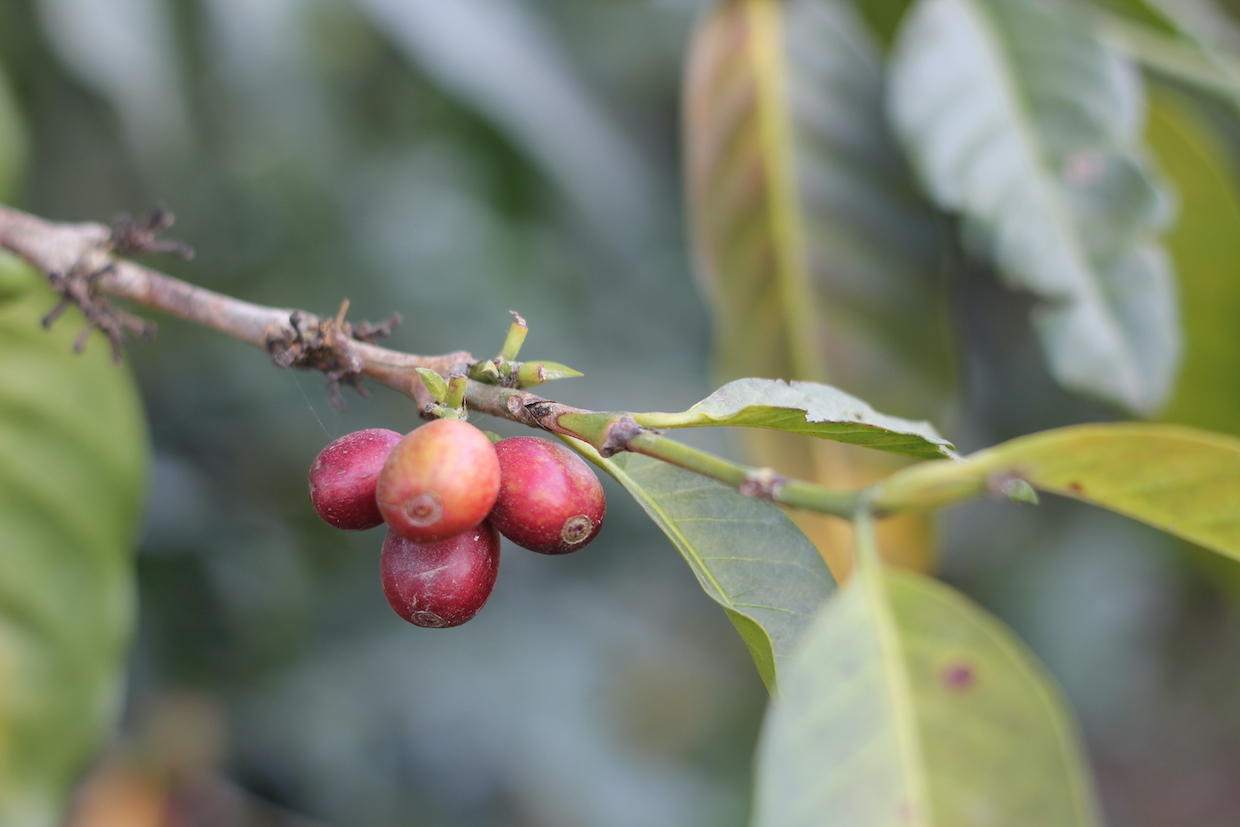[Note: This column is part of an ongoing editorial collaboration with sustainability expert Cory Gilman focused on deconstructing the subject of sustainability in coffee. Follow the full series here.]
As I’ve been pretty open about in the “Deconstructing Sustainability” series, sustainability in coffee is lacking the kinds of tangible and comprehensive underpinnings needed to drive widespread, meaningful change.
This is especially true in regard to economic sustainability. While a core pillar of sustainability’s “big three” (environmental, social, economic), economic sustainability is, practically speaking, often absent from sustainability initiatives. In instances when economic sustainability is incorporated into the efforts of coffee roasters and other buyers, it tends to be defined by language as fluffy as cotton candy.
Phrases like “livelihood support,” “fair prices” or “above market prices” all sound nice. Yet in my years of working in coffee and championing sustainable sourcing models, I can count on my fingers and toes the number of instances in which farmers’ economic sustainability is realistically considered, let alone applied in the model.
What Qualifies Economic Sustainability?
Picking up where we last left off in this series, it’s time to consider not just what’s meant by economic sustainability, but what qualifies it. How do we know when the economic dimension of sustainability has been achieved? How is progress and success measured? How is impact evaluated?
In a perfect world, the answers to these questions would come from in-depth and ongoing conversations with farmworkers, farmers, and cooperative leaders. They know their own situations better than anyone, and are similarly best equipped to identify their own needs.
In my experience, dedicated dialogue is often better than years of secondary research, especially if the intention is truly meaningful impact — as opposed to marketing. Qualitative research, in which goals and processes are developed inclusively between downstream and upstream actors, is always the most direct route, when possible.
However, for many downstream actors, coffee flows are too vast and opaque for such direct communication throughout an entire supply chain. In such cases, the most widely validated approaches revolve around a financial benchmark — a clear, data-driven number calculated by a credentialed methodology. A benchmark can be considered a first milestone for economically sustainable remuneration.
Living Incomes and Living Wages as Benchmarks
The most well-known of these benchmark-based approaches are “living wages” and “living incomes.” They share a similar premise, based on how much a household needs to earn in order to accommodate a decent standard of living for its members. According to Heifer International, which focuses on sustainable living incomes in rural agricultural contexts, these benchmarks must fulfill adequate provision of:
- Nutritious Diet: Based on dietary diversity and provision of sufficient calories, and macro and micronutrients
- Decent Housing: Located in safe areas while providing adequate shelter, permanent walls, adequate amount of space and necessary utilities for the local context
- Other Basic Necessities: Including education, healthcare, transportation, clothing, communication and cultural events
- Unexpected Costs: Representing adequate savings to withstand shocks, emergencies and/or any unanticipated expenses
While living wages and living incomes share those concerns, here’s where they differ: Living wages are specific to the context of hired workers who are paid at a regular frequency, whereas living incomes are based on annual net earnings for self-employed income earners. In other words, in the context of coffee:
- Living wages are most applicable to farmworkers, who are compensated based on volume (such as how much cherry is picked) or time (like a day rate).
- Living incomes pertain to farmers, as their annual net revenue is contingent on the profitability of their business. This includes variables like production costs and prices.
At the core of both of these benchmarks is a recognition that everyone has the right to basic-but-dignified human necessities.
Societal Shift Towards Equity
As complicated as the topic of living wages and living incomes may sound, both are quite intuitive and commonly applicable. They are not reserved for farmworkers and farmers in tropical hillside lands. The idea of paying people enough to live is a hot topic all over the world.
In the United States, we’ve been witnessing “the fight for $15” political movement, which seeks to increase the federal minimum wage to reduce poverty among workers. In the U.S. coffee industry, where workers such as baristas often earn low hourly wages, we’ve seen a parallel movement towards fair, transparent and appropriate compensation. This has manifested in the recent barista wage transparency movement, and more recently, a wave of coffee shop unionization efforts.
As a society, we’ve finally started to embrace that idea that coffee is more than a lifestyle product; it also represents a living for people on its front lines.
So when we talk about minimum wages or living wages, we’re really talking about benchmarks, which are important tools because they can help eliminate subjectivity in evaluating labor reform and livelihood interventions. Success is not about inching over a poverty line or increasing incomes by some subjective amount. “Better than” is not necessarily good enough.
Instead, success might be defined by a concrete, numerically based approach that essentially draws a pass/fail line in the sand. Anything that falls short of that number, that benchmark, is simply not up to par.
Applying Living-Wage and Living-Income Benchmarks
The approach outlined above is relatively easy to apply with living wages — i.e., those most commonly associated with hourly workers or farmworkers. Simply align the compensation with the benchmark: Pay $X per hour or day, based on a standard work week, and the gap can be closed. Gauging it is equally straightforward, as the number is either paid or it’s not.
Closing the living-income gap for coffee farmers tends to be more fluid and complex. A host of factors converge, each related to the next. Also, reaching the benchmark one year doesn’t necessarily mean it will be met the next year or the following one.
In closing the living-income gap, a critical eye needs to be kept on income trajectory. Is the gap between current incomes and benchmarked incomes shrinking over a given period? If so, that’s a good start, but progress needs to be monitored with time-bound milestones. Meanwhile, if there is backsliding or a lack of consistent gap-closing, that’s a hard fail, and reevaluation is in order.
With this approach, efficacy is contingent on meaningful livelihood outcomes, not productive outputs. Traditionally, the coffee industry has focused on proxies for economic sustainability, such as yield increases, quality improvements and income diversification. While such production shifts may yield positive results, they do not take into account rising costs, volatile market prices, resource scarcity, labor shortages or countless other factors affecting profitability.
While productive output has historically been thought of as synonymous with profits, what if the numerical benchmark, i.e. the living income, was the goal instead? That would mean that there would be no more celebrating something like “30% higher productivity leading to 15% higher incomes” if producers are still falling short of the living-income benchmark by 35%.
Living Income as a Pre-Condition for Living Wage
Now, what happens if farmers do end up earning a living income, yet aren’t paying farmworkers enough to live on? Should that be considered a success? Of course not.
Every single actor in the value chain contributes to the industry’s success and deserves to be paid equitably for it. Farmworkers are some of the most exploited, marginalized people, not just in coffee but all of agriculture.
However, we must keep in mind the financial fates of coffee farmers and coffee workers are almost always intertwined, with the economic sustainability of the former being a pre-condition for the economic sustainability of the latter.
As was eloquently explained in new research led by Carlos Caprio of Texas Tech University, “while the coffee industry must continue to strive to improve coffee workers’ living conditions, it’s important to keep in mind that expecting coffee farmers to pay their workers living wages only works when they’re able to earn additional income to cover the additional cost.”
Most coffee farmers, no matter how small their land holdings are and how impoverished they may be, are employers. On one hand, they bear responsibility for upholding workers’ labor rights and providing fair remuneration. On the other hand, unlike most employers in the industry, the vast majority do not experience anything like the profitability necessary to pay living wages.
Farmers are subject to extreme downward price pressure and victimized by prohibitively low value distribution in a way that is not experienced by other types of employers in the coffee chain, including exporters, traders, roasters or retailers. In current conditions, if most farmers did pay living wages, they would be nowhere near living income themselves.
Thus, coffee must facilitate living incomes for farmers. That critically means accounting for workers’ living wages in production costs. While there are certain production improvements and farm-level, business-oriented shifts that can support this, it will really entail re-slicing the whole pie into more equitable sizes.
[Note: Daily Coffee News does not engage in sponsored content of any kind and all views or opinions expressed in this piece are those of the author/s. Questions? Contact us here.]
Cory Gilman
Cory Gilman is never happier than when working to build equitable, inclusive and regenerative coffee systems — with a passion for prosperous farmer livelihoods as a precursor for broader environmental and social outcomes. Prior to focusing specifically on coffee, she spent a decade advancing sustainability initiatives for leading CPG companies. After a year living with and learning from smallholder farmers across Southeast Asia, Cory knew she wanted to spend her career supporting the people behind every cup and the places they call home. "She holds a Masters degree in Sustainable Development and Social Innovation, and is eager to support more resilient and equitable supply chains across sectors.








Comment